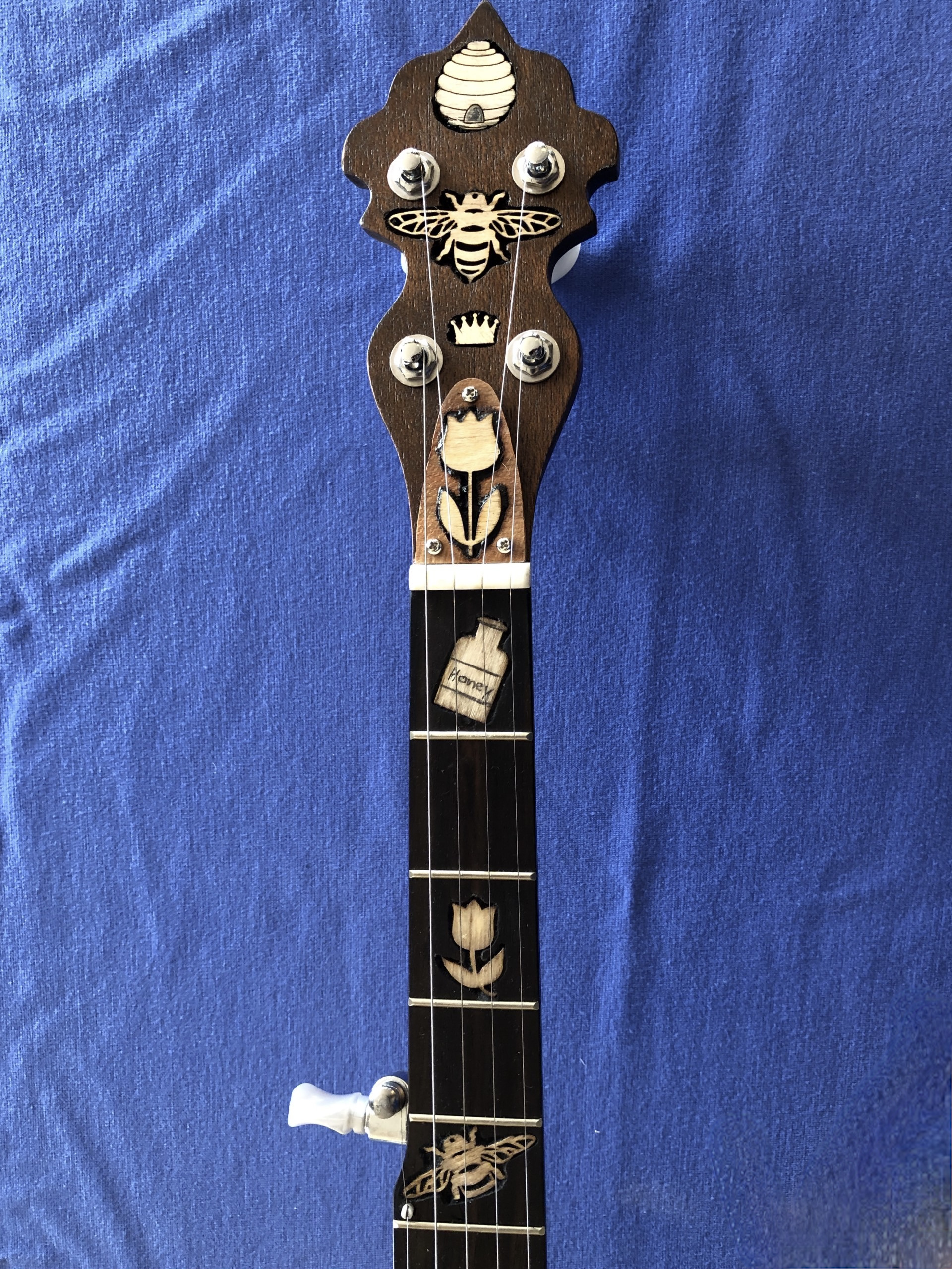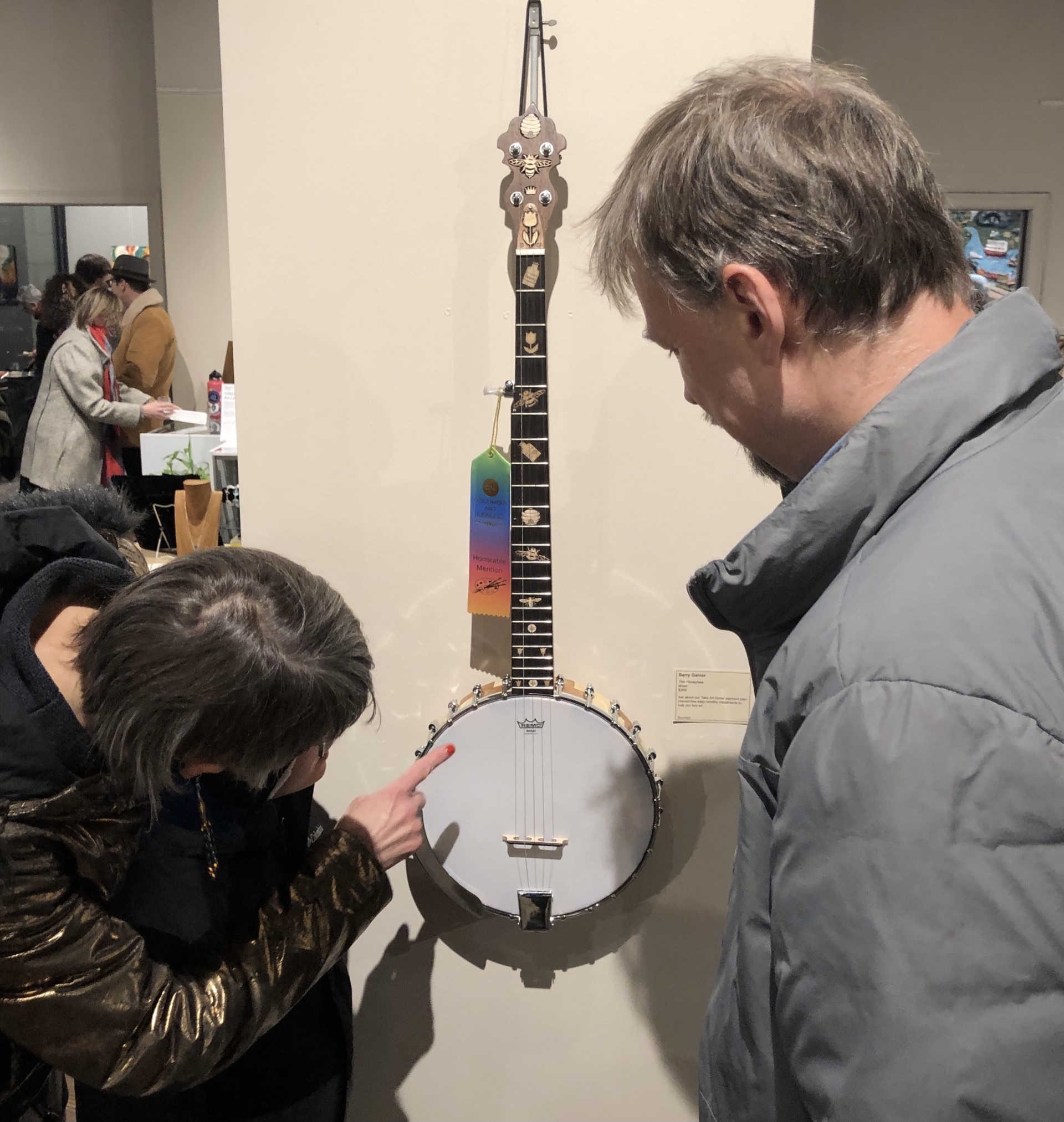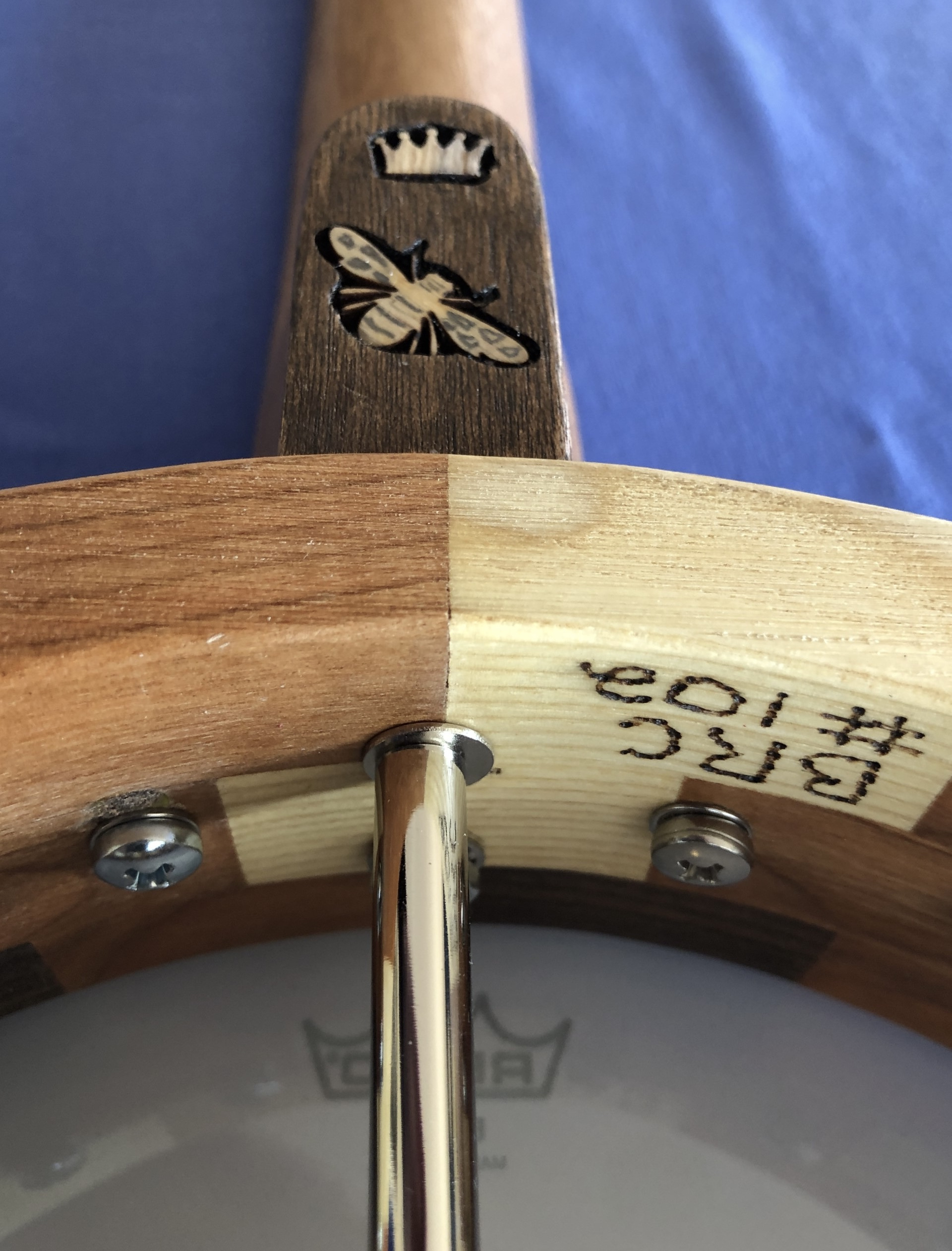At the beginning of each new calendar year, the inaugural exhibit at the community art league gallery is themed on the subject of food. This January, the so-called food show is entitled “Devour” and focuses on artists` perceptions of appetites and favorite culinary delights. In February, this exhibit will host a yearly fund raising event called “Let Them Eat Art” which is catered by local restauranteurs in a competition to produce the most flavorful finger food and beverage as determined by the voting of gallery visitors. The BRC craftsman constructed the “Honey Bee” banjo for the juried art show.

The peghead and fretboard display the busy honey bee, its hive, the queen`s crown, a honey jar, and nectar-filled flowers. In scientific nomenclature, the honey bee belongs to the genus Apis of the bee clade. These industrious winged creatures came from Afro-Eurasia to North America in the early 17th century, and they are commercially valued producers of honey and wax. Honey bees sting usually in defense of themselves or their colony, and they are fated to succumb shortly after inflicting a sting.

At the gala food show opening reception on a wintry night, visitors closely study the Honey Bee which garnered a ribbon in the adjudicated competition. During his initial decade of banjo building, the BRC craftsman installed only mother of pearl inlays; but in recent years, he has converted to laser-cut wood inlays made mostly of birch.

Like all BRC 5-stringers, the heel of the neck on the Honey Bee bears special inlays for the eyes only of the musician. On the rim nearby is an inscription (inverted) indicating that this instrument is the 102nd banjo built in our shop. Since 2016, over forty BRC banjos have appeared in local art shows.
From the BRC: Enjoy the best of food and health in 2024.

No Comments